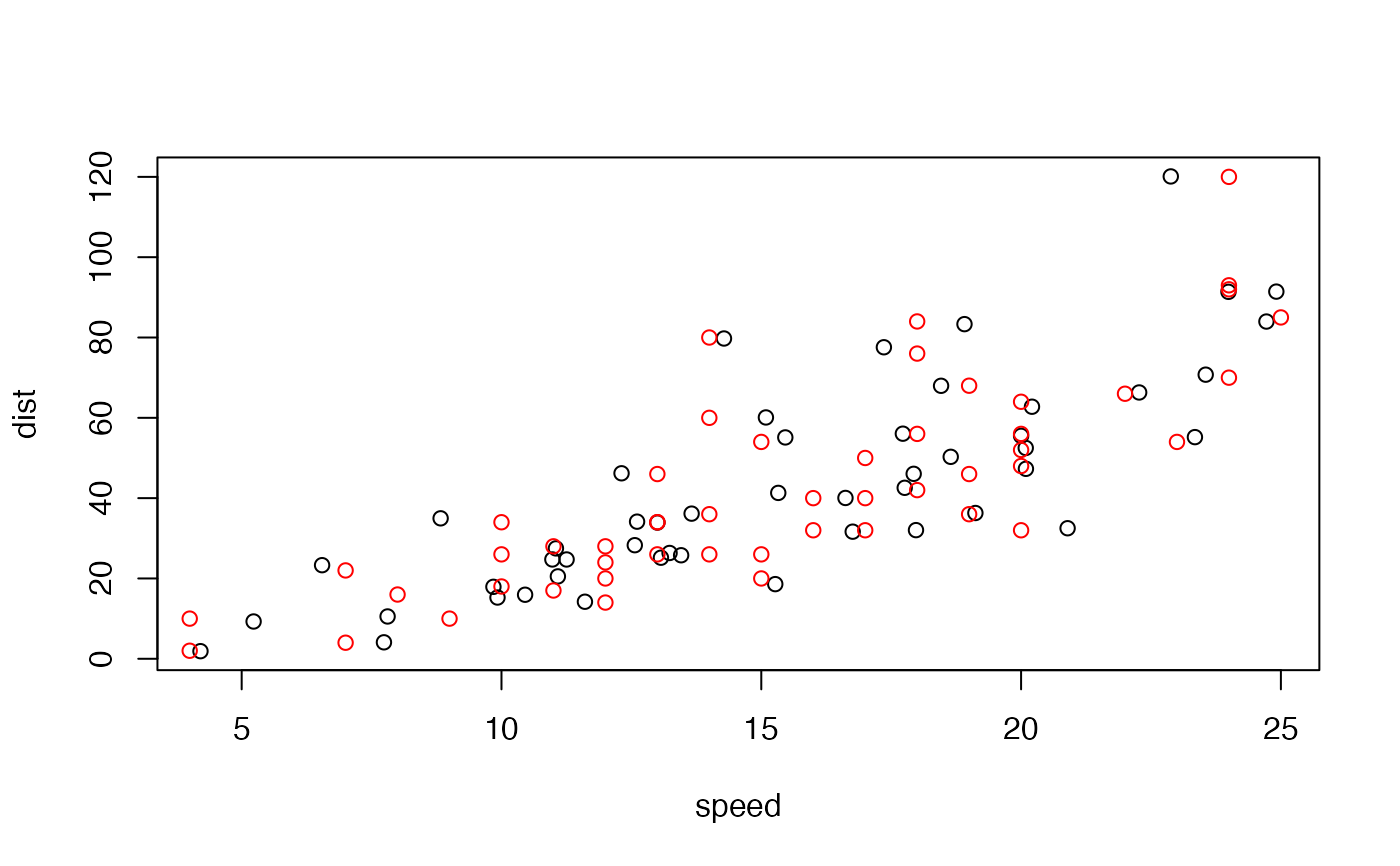Produces very dissimilar datasets with the same statistical properties.
metamerise(
data,
preserve,
minimize = NULL,
change = colnames(data),
round = truncate_to(2),
stop_if = n_tries(100),
keep = NULL,
annealing = TRUE,
K = 0.02,
start_probability = 0.5,
perturbation = 0.08,
name = "",
verbose = interactive()
)
metamerize(
data,
preserve,
minimize = NULL,
change = colnames(data),
round = truncate_to(2),
stop_if = n_tries(100),
keep = NULL,
annealing = TRUE,
K = 0.02,
start_probability = 0.5,
perturbation = 0.08,
name = "",
verbose = interactive()
)
new_metamer(data, preserve, round = truncate_to(2))Arguments
- data
A
data.framewith the starting data or ametamer_listobject returned by a previous call to the function.- preserve
A function whose result must be kept exactly the same. Must take the data as argument and return a numeric vector.
- minimize
An optional function to minimize in the process. Must take the data as argument and return a single numeric.
- change
A character vector with the names of the columns that need to be changed.
- round
A function to apply to the result of
preserveto round numbers. See truncate_to.- stop_if
A stopping criterium. See n_tries.
- keep
Max number of metamers to return.
- annealing
Logical indicating whether to perform annealing.
- K
speed/quality tradeoff parameter.
- start_probability
initial probability of rejecting bad solutions.
- perturbation
Numeric with the magnitude of the random perturbations. Can be of length 1 or
length(change).- name
Character for naming the metamers.
- verbose
Logical indicating whether to show a progress bar.
Value
A metamer_list object (a list of data.frames).
Details
It follows Matejka & Fitzmaurice (2017) method of constructing metamers.
Beginning from a starting dataset, it iteratively adds a small perturbation,
checks if preserve returns the same value (up to signif significant digits)
and if minimize has been lowered, and accepts the solution for the next
round. If annealing is TRUE, it also accepts solutions with bigger
minimize with an ever decreasing probability to help the algorithm avoid
local minimums.
The annealing scheme is adapted from de Vicente et al. (2003).
If data is a metamer_list, the function will start the algorithm from the
last metamer of the list. Furthermore, if preserve and/or minimize
are missing, the previous functions will be carried over from the previous call.
minimize can be also a vector of functions. In that case, the process minimizes
the product of the functions applied to the data.
References
Matejka, J., & Fitzmaurice, G. (2017). Same Stats, Different Graphs. Proceedings of the 2017 CHI Conference on Human Factors in Computing Systems - CHI ’17, 1290–1294. https://doi.org/10.1145/3025453.3025912 de Vicente, Juan, Juan Lanchares, and Román Hermida. (2003). ‘Placement by Thermodynamic Simulated Annealing’. Physics Letters A 317(5): 415–23.
See also
delayed_with() for a convenient way of making functions suitable for
preserve, mean_dist_to() for a convenient way of minimizing the distance
to a known target in minimize, mean_self_proximity() for maximizing the
"self distance" to prevent data clumping.
Examples
data(cars)
# Metamers of `cars` with the same mean speed and dist, and correlation
# between the two.
means_and_cor <- delayed_with(mean_speed = mean(speed),
mean_dist = mean(dist),
cor = cor(speed, dist))
set.seed(42) # for reproducibility.
metamers <- metamerize(cars,
preserve = means_and_cor,
round = truncate_to(2),
stop_if = n_tries(1000))
print(metamers)
#> List of 92 metamers
last <- tail(metamers)
# Confirm that the statistics are the same
cbind(original = means_and_cor(cars),
metamer = means_and_cor(last))
#> original metamer
#> mean_speed 15.4000000 15.4024926
#> mean_dist 42.9800000 42.9862221
#> cor 0.8068949 0.8011081
# Visualize
plot(tail(metamers))
points(cars, col = "red")
